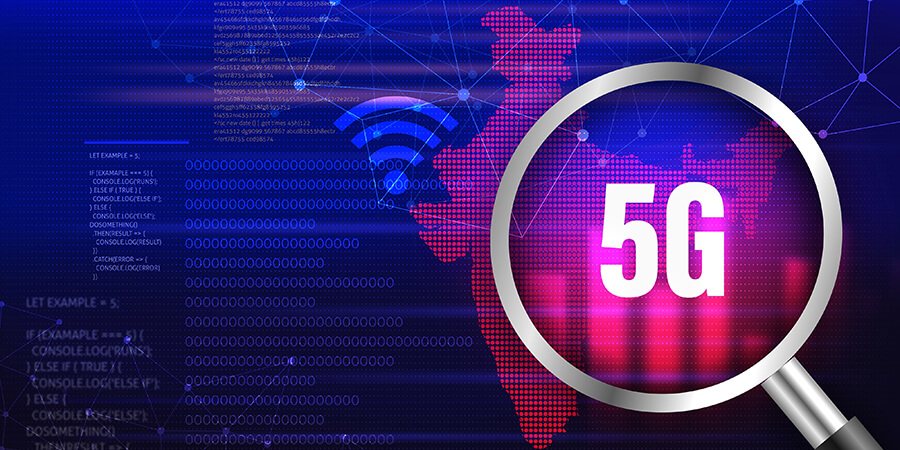As a core foundation for the Fourth Industrial Revolution, 5G has a huge potential to impact the socioeconomic growth of nations as well as people’s lives. An advanced digital society will play a key role in establishing a better environment for future generations.
Today, one of the countries most focused on digital inclusion is India. And as part of its government’s campaign “Make in India,” the country is looking to be a global hub for manufacturing, and 5G will be its game-changer.
To this end, the fifth generation of wireless connectivity was launched in India in October 2022. And the Union Minister of Communications announced in February 2023 that the country would be fully covered by these services by the end of 2024.
Up until now, the telecom operators have targeted 387 of the most densely populated of the 5G implementation in India nearly 4,000 cities. The Bharti Airtel Company has launched its services in 110 of these cities, while Reliance Jio has focused on 277. Within the next 15 months, both operators aim to maximize the impact of their networks. But is this possible?
To date, 5G covers only 10% of India, and the country is facing a lot of challenges in the meantime:
- Infrastructure
5G cannot carry data over long distances like 4G can. It requires an advanced infrastructure and a basic change in the core of the communication system. So this wireless technology needs an enabled infrastructure.
The 4G infrastructure in India supports 10 times less bandwidth than what the 5G networks need to support. And the country suffers from a lack of electricity, spectrum and fiber optics. 33% of the towers in India are fiberized, while the level of fiberisation is 65% to 70% in South Korea and 80% to 90% in Japan, the US and China.
Therefore, due to the shortage of infrastructure, the industry is still not ready and faces a real challenge in terms of internet penetration.
- Coverage
Covering an area with 5G requires the installation of a large number of towers in close proximity to each other, often in residential neighborhoods. The towers may be obstructed by a building, a tree, or a wall. This is the main reason why the most densely populated cities have not been fully covered by 5G until now.
- Spectrum Pricing
The central government set a high spectrum price, which made India one of the more expensive countries when it comes to this issue. Telecom operators viewed the government’s pricing decisions as unreasonable, particularly in light of the global recession that burdens companies with huge costs and makes 5G implementation and even network connectivity that much harder.
- Regulatory Restrictions
The implementation of 5G technology fundamentally depends on the availability of spectrum and fiber optics. Despite the high spectrum pricing, the Telegraph Right of Way Rules (RoW Rules) were recently amended to reflect its decision to facilitate the extension of fiber optics. While considered a good first step, the operators are still awaiting more facilities from the authorities.
- Privacy Concerns
Concerningly, 5G could potentially open the door for an increased number of cyber security breaches and hacks. The Australian government drew attention to this issue last year, noting that the new architecture of 5G “provides a way to circumvent traditional security controls by exploiting equipment at the edge of the network, exploitation that will affect the confidentiality of customer data.” And the Indian government is taking this issue into consideration in its attempts to tackle this issue efficiently, especially considering 5G will generate more data with a lot more connected devices.
- Financial Liability for Consumers
Yet another challenge, this time on the consumer front, is that 5G, as a new technology, needs compatible devices. Currently, not all consumer mobile devices can support this technology. Still, some notable companies launched 5G-enabled devices in the past few months, including Apple, Google and Realme. But because these devices remain rather expensive, the undue financial burdens can put off a sizable number of users.
While 4G networks were originally launched to handle large amounts of data, 5G is designed to connect not just phones but everything around us all at once (industrial equipment, cars, etc.). It is the societal spark that stands to usher in a wave of economic growth and innovation by growing the customer base and creating a wealth of new opportunities for businesses.
While there is still a long way to go for the population as a whole to adopt 5G, telecom operators are determined to overcome the challenges of 5G implementation. They have their sights set on deploying new devices, applications and services across India — indeed, a future beyond 4G. But will they achieve this goal?





